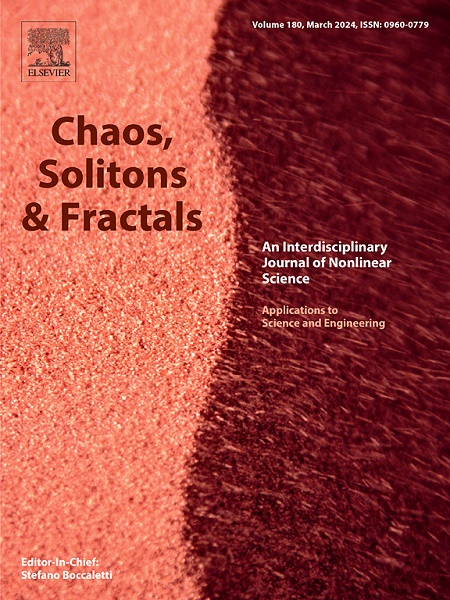简单传染的基于配对的近似
IF 5.6
1区 数学
Q1 MATHEMATICS, INTERDISCIPLINARY APPLICATIONS
引用次数: 0
摘要
高阶相互作用在复杂的传染过程中起着重要作用。平均场近似已被用来描述在群体相互作用的情况下传播的开始。然而,基于个体的平均场模型无法捕捉不同节点子集之间的相关性,这可能会显著影响传染过程的动态。在本文中,我们引入了一种基于对的平均场近似,它允许通过考虑节点对水平上的相关性来研究简单复合体上SIS模型的动力学。与基于个体的平均场方法相比,提出的近似方法对简单复合体上传染过程的动力学产生了更准确的预测。具体而言,基于对的平均场近似在预测双稳定区域的范围、从无病状态到地方病状态的转变类型以及感染个体比例的平均时间演变方面提供了更高的准确性。至关重要的是,对于基于对的近似,我们能够获得流行病阈值的解析表达式,它阐明了对模型参数的依赖性。通过与随机模拟的比较,我们表明我们的模型正确地预测了简单复合体中流行病爆发的开始取决于高阶相互作用的强度。总的来说,我们的研究结果强调了在高阶相互作用下调查传染过程时考虑配对相关性的重要性。本文章由计算机程序翻译,如有差异,请以英文原文为准。
A pair-based approximation for simplicial contagion
Higher-order interactions play an important role in complex contagion processes. Mean-field approximations have been used to characterize the onset of spreading in the presence of group interactions. However, individual-based mean-field models are unable to capture correlations between different subsets of nodes, which can significantly influence the dynamics of a contagion process. In this paper, we introduce a pair-based mean-field approximation that allows to study the dynamics of a SIS model on simplicial complexes by taking into account correlations at the level of pairs of nodes. Compared to individual-based mean-field approaches, the proposed approximation yields more accurate predictions of the dynamics of contagion processes on simplicial complexes. Specifically, the pair-based mean-field approximation provides higher accuracy in predicting the extent of the region of bistability, the type of transition from disease-free to endemic state, and the average time evolution of the fraction of infected individuals. Crucially, for the pair-based approximation we were able to obtain an analytical expression for the epidemic threshold, that elucidates the dependency on the parameters of the model. Through comparison with stochastic simulations, we show that our model correctly predicts that the onset of the epidemic outbreak in simplicial complexes depends on the strength of higher-order interactions. Overall, our findings highlight the importance of accounting for pair correlations when investigating contagion processes in the presence of higher-order interactions.
求助全文
通过发布文献求助,成功后即可免费获取论文全文。
去求助
来源期刊

Chaos Solitons & Fractals
物理-数学跨学科应用
CiteScore
13.20
自引率
10.30%
发文量
1087
审稿时长
9 months
期刊介绍:
Chaos, Solitons & Fractals strives to establish itself as a premier journal in the interdisciplinary realm of Nonlinear Science, Non-equilibrium, and Complex Phenomena. It welcomes submissions covering a broad spectrum of topics within this field, including dynamics, non-equilibrium processes in physics, chemistry, and geophysics, complex matter and networks, mathematical models, computational biology, applications to quantum and mesoscopic phenomena, fluctuations and random processes, self-organization, and social phenomena.
 求助内容:
求助内容: 应助结果提醒方式:
应助结果提醒方式:


